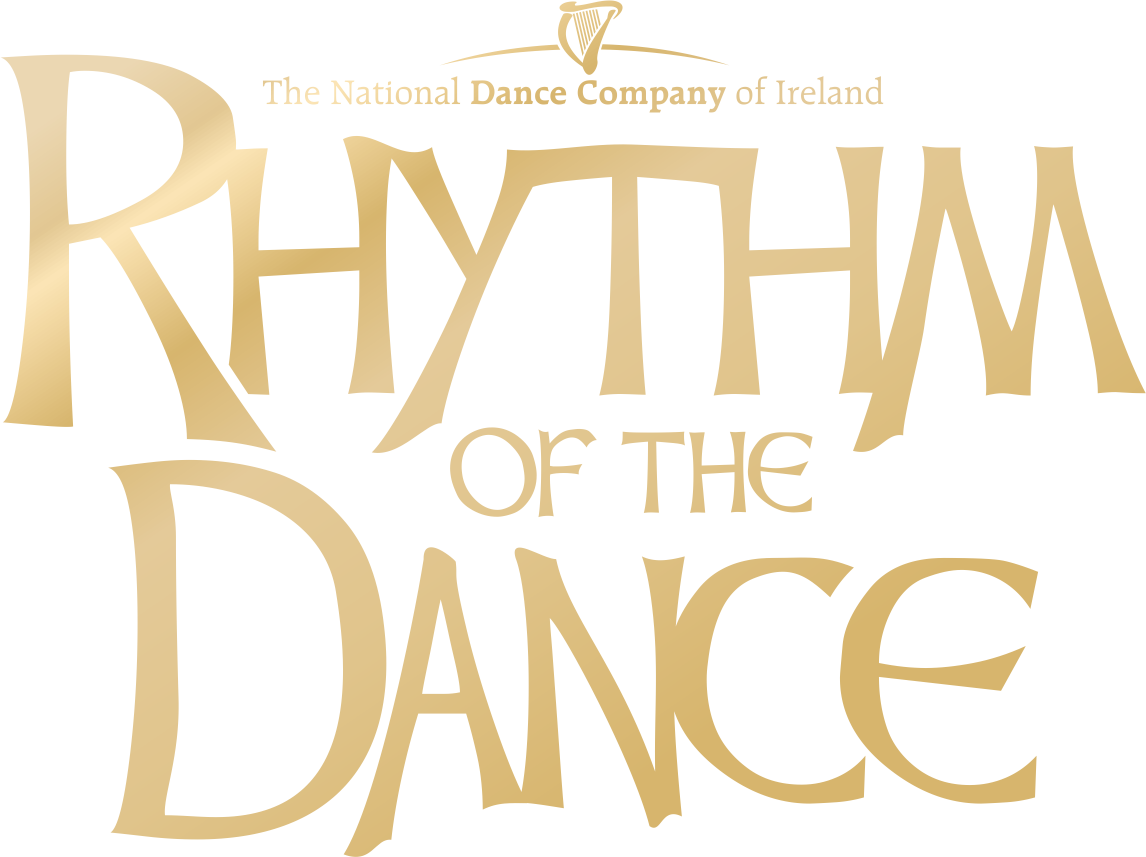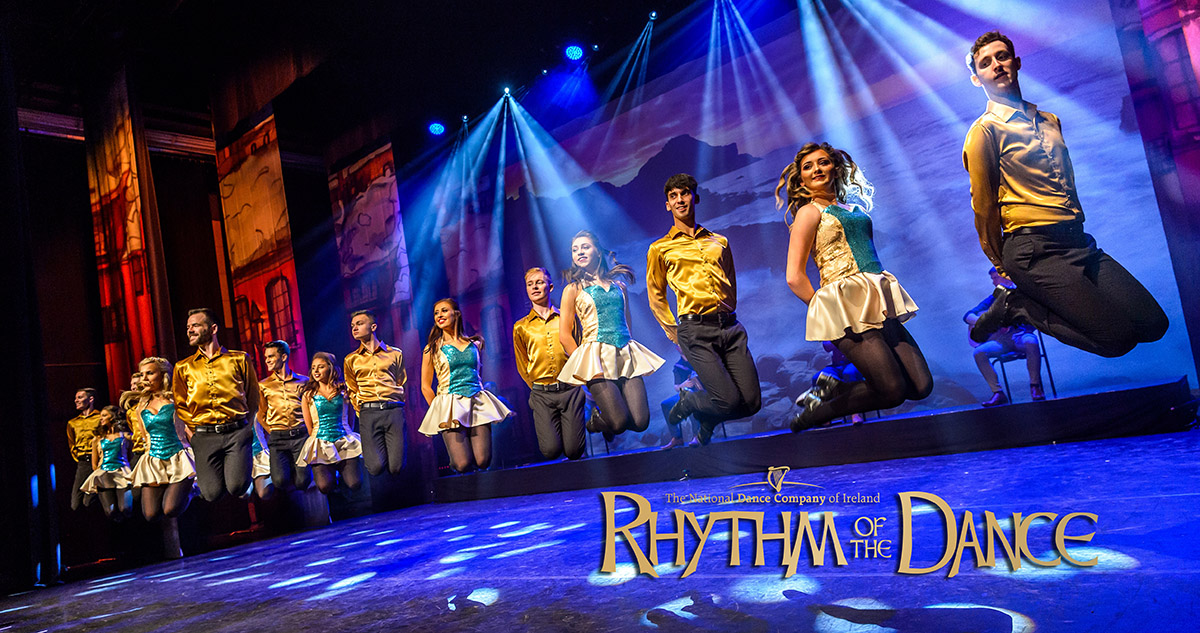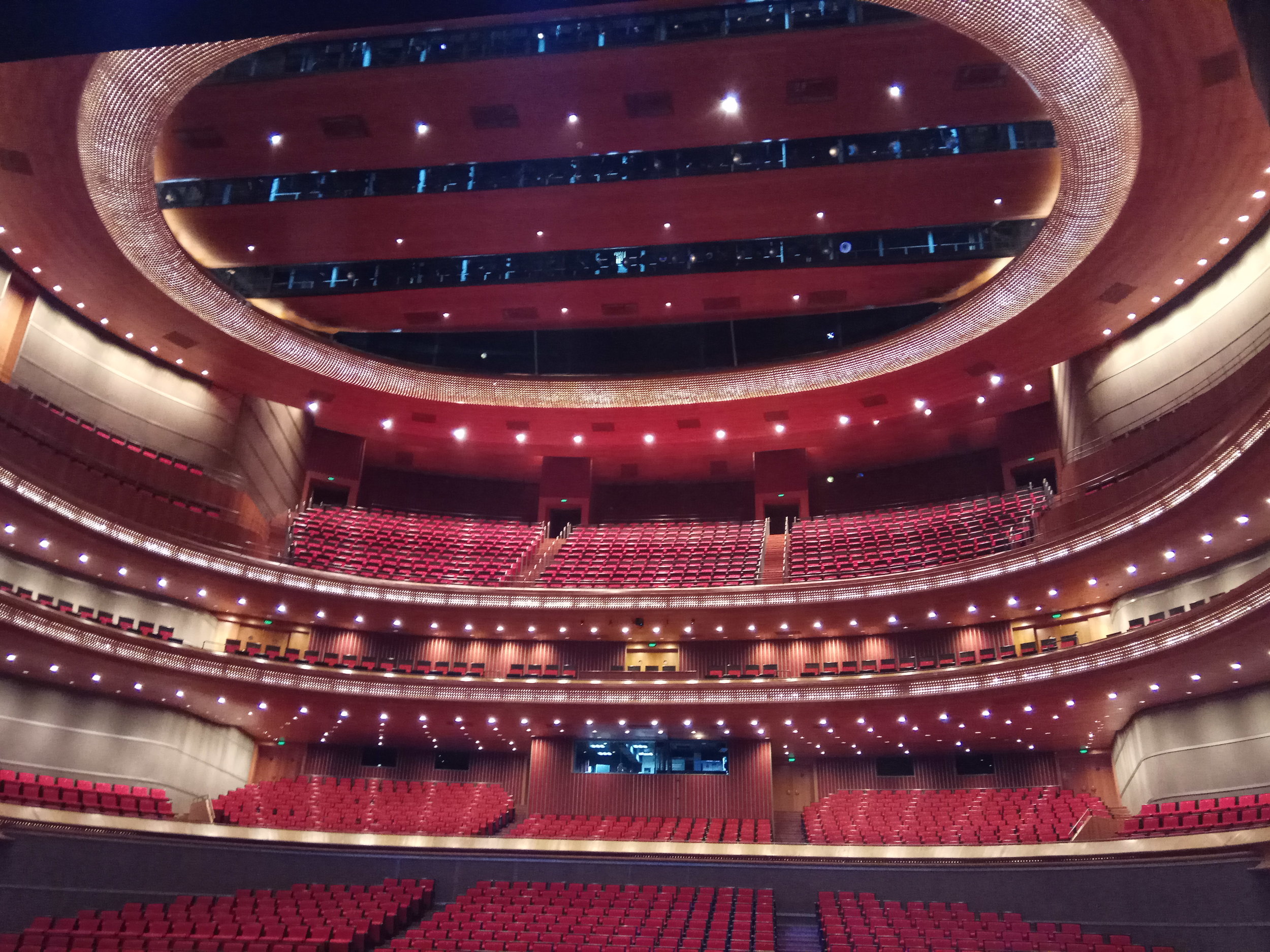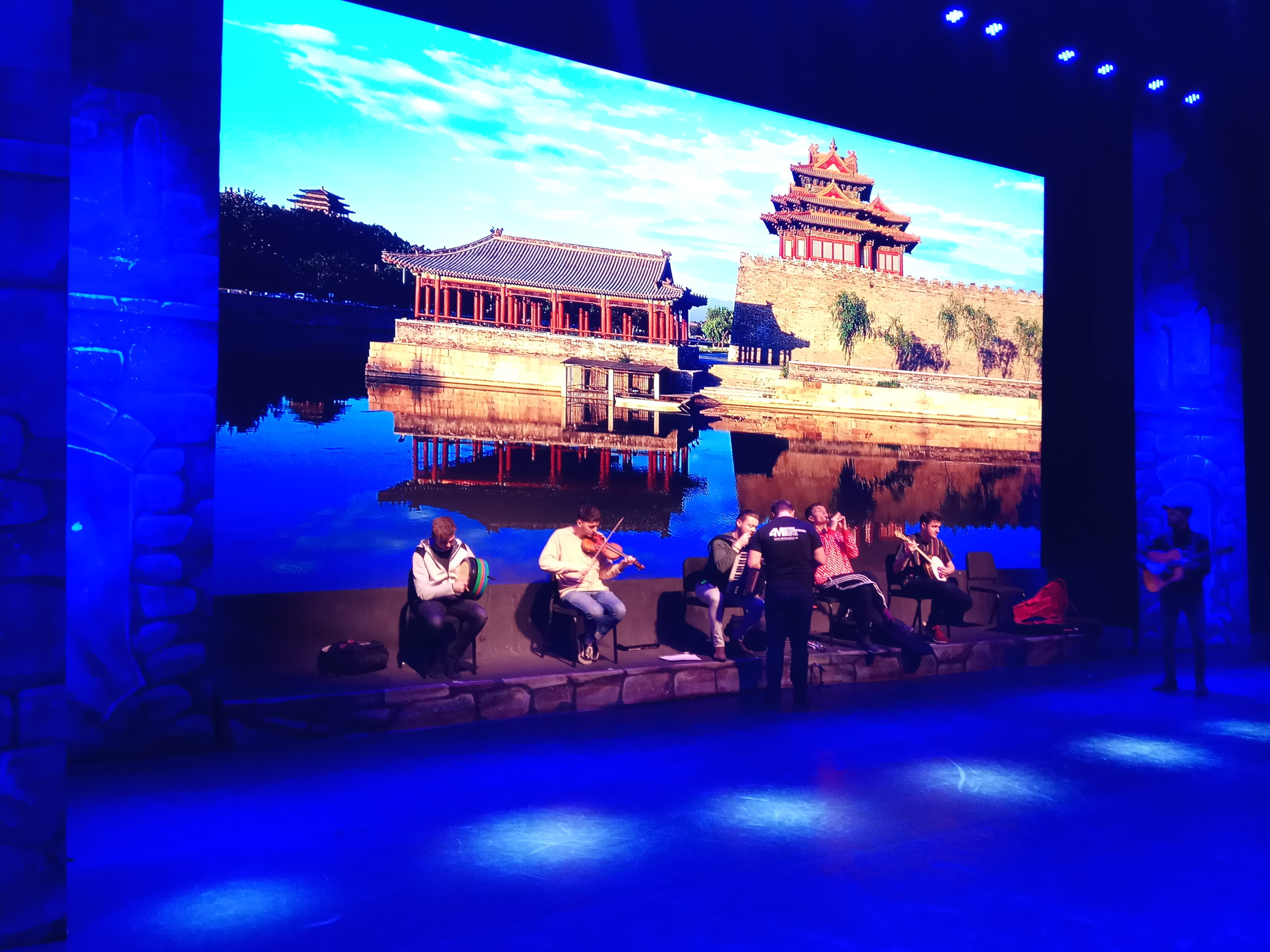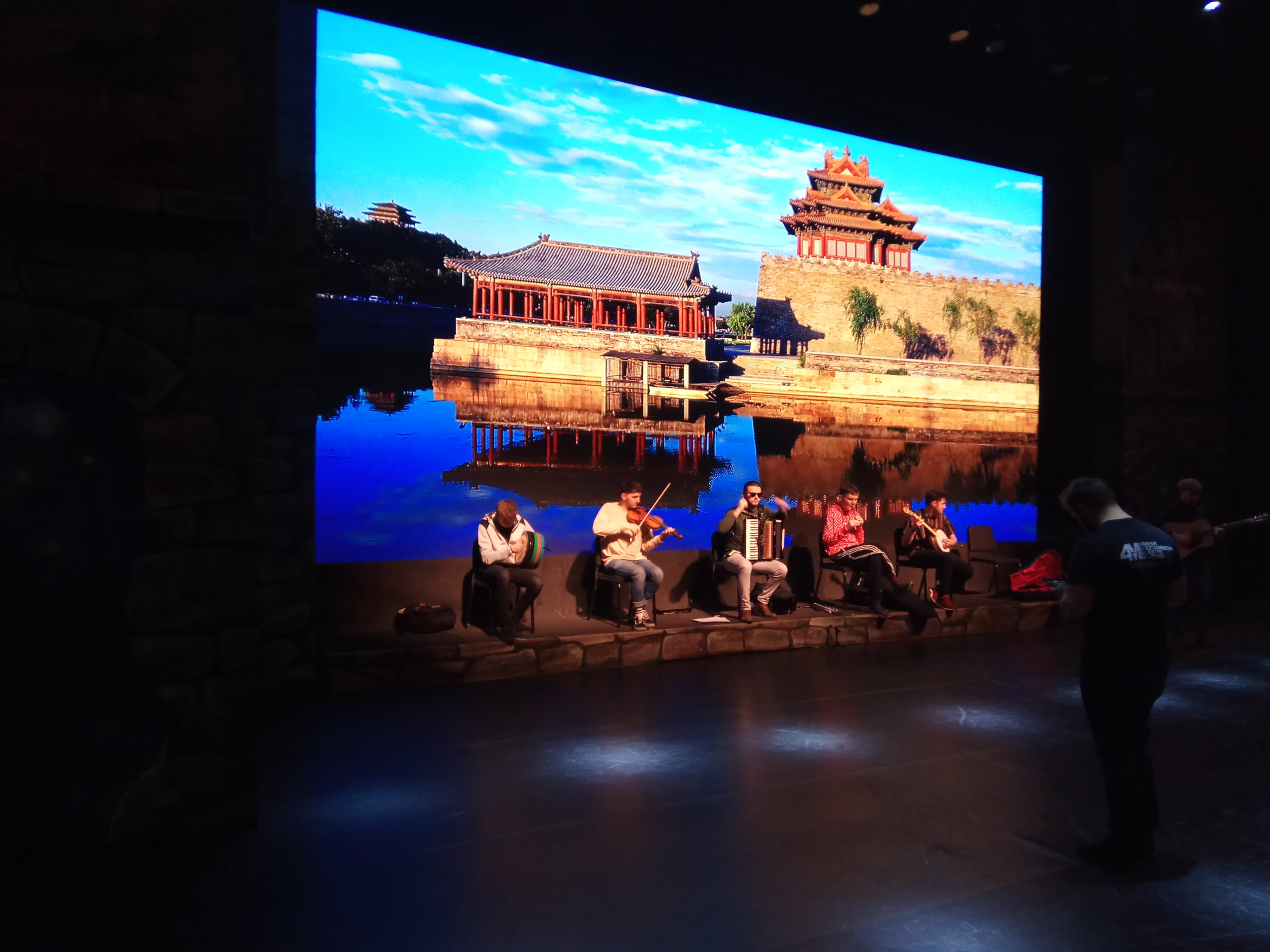


This incredible live show creates a new era in Irish entertainment, containing a wealth of Irish talent, featuring World and Irish champion dancers, some of the finest Traditional musicians and singers who are a big hit everywhere. Combining traditional dance and music with the most up to date stage technology, this two-hour dance and music extravaganza takes the audiences on an exhilarating and exciting, energy-packed time trip through the ages. It’s internationally rated as one of the most popular and busiest Irish step dance shows in the world making it such a success with critics and audiences worldwide. Be sure to share the experience when it comes to a venue near you. You’ll be very glad you did. It really is out of this world as seen by 7 million people in 50 countries.
Origins of the Show
From the creation of Rhythm of the Dance in 1998 (initially the show was set up for a 3 week tour of the United States) it has toured consistently internationally and is achieving greater critical acclaim year after year.
This wonderful show continues to evolve thanks to the constant striving for perfection by its Director/Producer, choreographer and composer to keep the show fresh and interesting so that audiences who attend performances regularly will always find some new and exciting elements within the programme.
With a wonderful, gifted young cast of dancers, musicians and singers, featuring live performances from the entire troupe, this is a show that has won critical acclaim across 4 continents of the world in 50 countries to over 7 million fans. And now after 20 Years of showcasing the very best in Irish dance to the world, the show has undergone a process of renewal, reinvigorating the choreography and music to create an even more spectacular performance. Producer Kieran Cavanagh is very excited about the updated format of the show, he hopes that Rhythm of the Dance will be a breathe of fresh air into Irish dance with this traditionally rooted and authentic production.
China Shenzhen City Eve of the new Millennium
EARTH DOME, with a live audience the show was beamed to over 750 million viewers on syndicated National Television.
Poland 2001
Voted Best Irish Dance Show, presentation of the award to Kieran Cavanagh Director/Producer ROTD was made by actors Stephanie Powers (Hart to Hart) and Michael York. (Kieran and the shows lead dancers flew to Poland from an Australian tour to accept the award and immediately afterwards returned to Oz to continue the tour).
France, Paris 2003
Palais de Congress sold out for Rhythm of the Dance.
India
Bangalore National Park, Rhythm of the Dance performed to an audience of 10,000 people for a benefit concert in aid of Mother Theresa Orphanage there.
Greece 2004
By invitation of the Greek Government Rhythm of the Dance performed in the Acropolis, Athens to an audience of 5,000 people.
Russia 2005
Kremlin Palace Theatre, Rhythm of the Dance performed daily concerts for one week
Dollywood, Tennessee, USA 2007, 2008 and 2015
Rhythm of the Dance were honored with full houses for the entire run in Dolly Parton’s theme park. But the day in 2007 that Dolly and Rhythm of the Dance performed together to an invited audience of 1,000 media journalists was the most memorable event of our stay. Dolly sang “When Irish Eyes Are Smiling” with Rhythm of the Dance’s own 3 Irish tenors and along with Rhythm’s cast of dancers Dolly performed a rousing version of her own composition“We Irish”. It brought the house down!
10TH Anniversary World Tour. 2009-2010
2009 began the 10th anniversary world tour of Rhythm of the Dance, playing over 250 venues in 17 countries, meeting with high praise from fans and supporters at every stop along the way.
Rhythm of the Dance sells out the Great Hall of the People in Beijing.
It was a massive honour to be allowed to play this historic and symbolic venue, and a massive delight to have entertained and enthralled the capacity audience.
15TH Anniversary World Tour. 2014-2015
Rhythm of the Dance embarked on an expansive tour to celebrate the 15th year of performing our show, playing to packed houses and delighted audiences across North America and Eu
Closing Ceremony of inaugural European Games in Azerbaijan.
Rhythm of the Dance had the great honor to perform at the closing ceremony of the first ever European Summer Games in Baku Azerbaijan 2015.


-Shop-

The History
of Irish Step Dance
The history of Irish dance started when the Celts arrived in Ireland from central Europe over two thousand years ago. Bringing with them their individual styles of dances and music.
There are vague references to the early history of Irish dancing but evidence shows that its first participants were the Druids. They danced in religious rituals honoring their pagan gods. Around 400 A.D., after the conversion to Christianity, the new priests adopted the pagan style of art in creating their beautiful manuscripts, and the peasants kept the pagan style of music and dancing.
The circle dances of today began after the Anglo-Norman conquest in the twelfth century. The Carol was a popular Norman dance where the leader sang and a circle of dancers replied with the same song.
Three Irish dances are often referenced from the sixteenth century: the Irish Hey, the Rinnce Fada and the Trenchmore. One of the first mentions to dance was in a letter written to Queen Elizabeth I in 1569 in which the dancers were described as being very beautiful and magnificently dressed first class dancers.
During the mid-sixteenth century, dancers performed in the great halls of newly built castles, and some of the dances were brought to the court of Queen Elizabeth. The Trenchmore was an adaptation of an old Irish peasant dance, and the Hey was a predecessor of the present day reel. Irish dancing was accompanied by the music of the bagpipes and the harp.
The dancing master appeared in Ireland in the eighteenth century. He would wander from village to village to teach dance to peasants. Each dancing master had his own district and never trespassed into another master’s domain. When they met at fairs, they challenged each other to dancing competitions that ended only when one group was left standing.
Each master had his own style, so several versions of the same dance would be found in different areas of Ireland. Over the centuries, Irish dances were modified into the jigs, reels, hornpipes, sets, half sets and polkas performed today. Solo dancing, or step dancing, first appeared at the end of the eighteenth century.
There are dancing competitions in all four Irish provinces and winners qualify for the All Ireland Championships. The international competitions are held in Dublin at Easter and the dancers from other countries compete for the world title. The success of Riverdance , Lord of the Dance and Rhythm of the dance has placed Irish Dance on the international stage. Dancing schools in Ireland and all over the world today are filled with youngsters imitating the dancing styles which
The Footwear
Most women in Ireland, until over a century ago, would have danced barefoot; which gave them a natural grace and lightness which today’s dancers strive to maintain. Girls began wearing softshoes, known as ghillies, in 1924 while dancing jigs, reels, and slip jigs. Men worked on the land, and therefor wore hand-made rawhide shoes which were light and suitable for dancing. Fishermen on the coasts of Ireland wore wooden soled shoes, and when teaching traditional music was outlawed, the rhythms of the various dance tunes were maintained by tapping the hard shoes on the flag stones and tiles.
Today’s modern Irish dancers wear specially made ‘hard shoes’ and soft shoes. After black stockings were forbidden by the Church for being seductive, female dancers switched to white socks- poodle socks- which are still worn today, especially in competition where they contrast the black shoes. Tights are however slowly gaining popularity due to theatrical presentations.
The Bodhrán
The Bodhran is framed drum, usually of bent wood and goatskin tacked to one side, the other side is open ended for one hand to be placed inside the drum to control the Pitch and timbre.
The very origins of this instrument are shrouded in history. One legend dates its use to 1603 where it was used as a battle drum for the Celtic forces of “Tyrones Rebellion” fighting the forces of Queen Elizabeth 1.
Recent years have seen a significant resurgence in the Bodhrans popularity in no small part due to the work of Irish Composer “Sean O Riada”, who declared the bodhran to be the native drum of the celts with a musical history pre-dating Christianity.
From mysterious origins the Bodhran has become popular throughout the world, known as the Irish instrument central to the driving rhythms, on which Rhythm of the Dance is based.
Fiddle
The lovely, lilting sound of the Irish fiddle is synonymous with Irish music. The term fiddle may refer to any bowed string musical instrument most often the violin While fiddle playing, or fiddling, refers to the style of music playing which is generally louder and more rhythmic than traditional classical violin. Fiddles are generally strung in a different way to a classical violin, in order to capture a uniquely Celtic sound.
The fiddle emerged in 10th-century Europe, deriving from the Byzantine lira By the 11th or 12th century the bow had been introduced to Ireland and, upon arrival in the Emerald Isle there was a rapid evolution, as the lyres were adapted for bowing. As early as these middle ages Ireland was fast gathering an international reputation for the quality of its musicians.
For centuries, Irish fiddles have been a powerful part of the cultural tradition of Ireland and are of the most important instruments in the traditional repertoire.
By the early 19th century, certain modifications and improvements to the fiddle were in place…chin rests for comfort appeared around 1820, and the range of the instrument was increased by the creation of a longer fingerboard. In the early 20th century, Irish families and friends would gather in the country, often at crossroads, and practice Irish fiddling in a group. Get-togethers at houses and pubs were also very common the instrument became a way of uniting the Irish people through traditional folk music. Modern musicians remain intrigued by the traditional folk melodies and techniques of the past and contemporary Irish musicians use the fiddle to add traditional elements to a variety of styles, including pop and rock. The fiddle is considered the oldest traditional Irish instrument of all. Irish fiddle playing today has never been more vigorous, whether at a professional or amateur level, with an extremely high standard of playing and a strong demand for the music both in Ireland and elsewhere.
The Costumes
There are no specific rules governing the design of costumes in step dancing. Traditional costumees are based on the simple princess cut dress. The dresses are decorated with Celtic designs, reproduced from those seen in The Book of Kells, The designs are created with applique and emboidery, and Colors have always been present to highlight the designs; The skirts are gored, box pleated, split panel, or knife-edged- all to allow free leg movement. Skirt length is to be above the knee by no more than four inches as regulated by the irish step associations
Uilleann Pipes
The Uillean Pipes (pronounced ill-in) are uniquely Irish. The uilleann pipes had their beginnings in the early eighteenth century. Pre-dating the Uillean pipes the common form of Irish pipes “the Irish war pipes” were very simular to the present day Scottish pipes. At one time bagpipes were popular throughout Western Europe and parts of Asia. Borrowing and combining ideas from other countries like Scotland, England, and France, the Irish began redesigning their bagpipes.
The resulting uilleann pipes are regarded as outstanding among the pipes of the world for their mellowness and sweetness of tone. These newer pipes had a chanter of two full octaves compared to the old war pipes with just nine notes. Instead of a blowpipe the bag was inflated with a bellows operated between the waist and the elbow. The final design came about the late eighteenth century with the addition of the third drone. These pipes are played in a sitting position rather than standing or marching like with war pipes or the Scottish Bag Pipes.
The Gaelic word for elbow is uilleann hence the name Uilleann pipes.
Irish Flute &
Low Whistle
The wooden instrument known today as the Irish flute was actually not developed for that kind of music. It had been used in orchestras until it was replaced by the modern metal flute,
When the modern orchestral flute was developed by Theobald Boehm in the mid-19th century, simpler six-hole wooden flutes began appearing in pawn shops. These were sold cheap to traditional musicians who used them to play traditional Irish music. Soon a few instrument makers began duplicating the earlier wooden flutes for folk players. The newly crafted Irish flutes still had six finger holes, but now only a few or no keys as there are few sharps or flats in traditional folk music. Irish flutes are also traditionally used in bands made up of only flutes and drums. Flutes of three to seven different sizes (and ranges) are used together. The center of this band activity is Northern Ireland.
Today, Irish flutes are made from woods such as grenadilla, boxwood, or bamboo, or polymer. They can cost anywhere from a couple of hundred dollars / euro to several thousand.
Irish Harp
While its earliest origins are lost, the Irish harp has a certain history dating back at least 1000 years. Brian Boru, the last High King of Ireland (d 1014), is said to have been an accomplished player.
At this time, the Gaelic harp was revered in Celtic culture (and all over Europe). It was commonplace for Irish kings and chieftains to have their own resident harper.
When The English monarch Henry VIII declared himself King of Ireland in 1531. Such was the fame and prestige of the Irish Harp, it was chosen as the official national symbol of Ireland and used on the coinage of the time.
As the Celtic social order waned, the Gaelic harp became an emblem of resistence to the Crown and England. As such, it was banned at the end of the medieval period and the old Celtic harp tradition began to die out. By the 19th century, the Irish harp, was practically extinct.
In 1792 a group of traditional harpers assebled in belfast for a traditional harp festival where the musician and folk music collector, Edward Bunting wrote down the music they played and the terminology of the harpers. Amazingly this appears to be the first time traditional Gaelic harp music had been recorded on paper, thus saving these tunes for our enjoyment.
The traditional Irish harp’s distinguishing features are its use of wire (usually brass) strings and its resonating chamber carved from a single log (traditionally willow). The highly tensioned strings are played with fingernails, producing a very clear sound.
News & Updates
Stay Tuned for more exciting news/updates.
Review: Rhythm of the Dance – Darlington Hippodrome
Calling all StageSider’s, welcome back to another Review here at StageSideUK! We were whisked off to the mountain tops, rivers and fields of Ireland as we experienced the Rhythm of the Dance, at Darlington Hippodrome.
This performance was simply magical. The energy of the band was contagious, and had the audience clapping and whooping along with them. I found myself getting lost in the rhythm and tapping along, a superb soundtrack for some equally superb dancing.
I want to give a mention to the fiddle player, who was completely professional. There was one moment where a string on the fiddle snapped, and she had left the stage quickly without making a scene. In the meantime, the flute, guitar and what looked like a banjo, took over and carried the rhythm section for a little while. When she returned to the stage she brought twice as much energy and received a round of applause for the way she dealt with it. This is NOT a criticism… this is me pointing out how amazing this band were. Each one talented and the ability to just take over each others melodies and rhythms were amazing! An amazing band and perfect performance! Well done!
The dancers were also amazing. I was in awe from the beginning to the end. How do they dance like that? How do they have the stamina and doesn’t it hurt their feet?! All questions I had to ask myself during the interval. The whole company of dancers were stunning to watch and all of them performed beautifully as part of the ensemble and as individual dancers.
Not knowing much about Irish dancing, I can’t comment on the execution etc, but I can say it was aesthetically pleasing, engaging, relaxing and yet full of energy and excitement!
The set design combined with the lighting design worked so well. And the added projections were amazing. They really lured you in as an audience member. The three areas of the show work so well in transporting you to the riverside, the mountain tops, a busy street. A great display of visual effects and a lovely evening of entertainment. This is a show I didn’t know I needed to see, until I saw it and now I am beyond glad I have experienced the Rhythm of the Dance.
Now onto the ratings
Entertainment:
This show gave me a fantastic night out at the theatre, it was good to finally see the show for the first time. The hype surrounding was completely valid!. I think it was completely stunning, entertaining and a great evening! I am really excited, I am already waiting for the next tour announcement. This is five out of five star entertainment. Nothing less than amazing!
Accessibility
This show is loud, the bass is pumping and I did find myself getting carried away with the bass a bit. My heart seemed to change pace, but I do also have one of the dodgiest hearts going. Other than that, this show has a lot of visual stimulation, some shouting, some participation and the energy in the room gets quite intense but I thoroughly enjoyed my experience and I got involved as far as I wanted to, and it wasn’t an issue. This isn’t one of those shows where they will point you out and keep making you clap.
Overall
Post pandemic, to see something this polished, professional and slick, is amazing. I absolutely loved my night at the theatre and Rhythm of the Dance is a show that has to be seen! It was something new for me and it is something I now know I need to see more often! With all the Irish folk songs you can handle, tip tapping and some great musicality, this show has it all and then some. An amazing, professional, visually stunning and musically interesting performance. Five out of five stars, easily!
Stepping It Out
CATHERINE MURPHY sees Rhythm of the Dance and gives it five stars
Now in its 23rd year, Rhythm of the Dance has been honed to a point where it’s an authentic Irish offering featuring some of the best exponents of dance, song and traditional music.
Kieran has assembled a team with impeccable credentials. Lead dancer/choreographer and creative director, Meath man Dane McKiernan, joined the company in 2007. He followed this with a stint touring worldwide
Fantastic Venues for our Chinese Tour Dates.
5999 SPECTATORS + ONE STEVEN SEAGAL
As if it wasn't enough to get standing ovations to 6000 people at the Crocus City Hall in Moscow , we were then joined back stage by Hollywood legend Steven Seagal who thoroughly enjoyed our show .. an absolute gentleman and so gracious with his time !! What an honor for the cast of Rhythm of the Dance !!
Rhythm of the Dance's latest Tour is attracting rave reviews, to read what the reviewers have to say [CLICK HERE]
Performed by The National Dance Company of Ireland, this incredible, highly-professional show saw fans gasping and shouting out in awe - while clapping and stomping their feet along to the music in true Celtic style throughout the two-hour performance.
